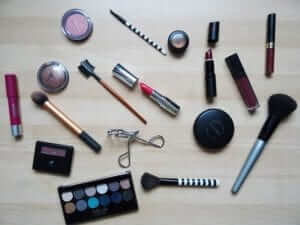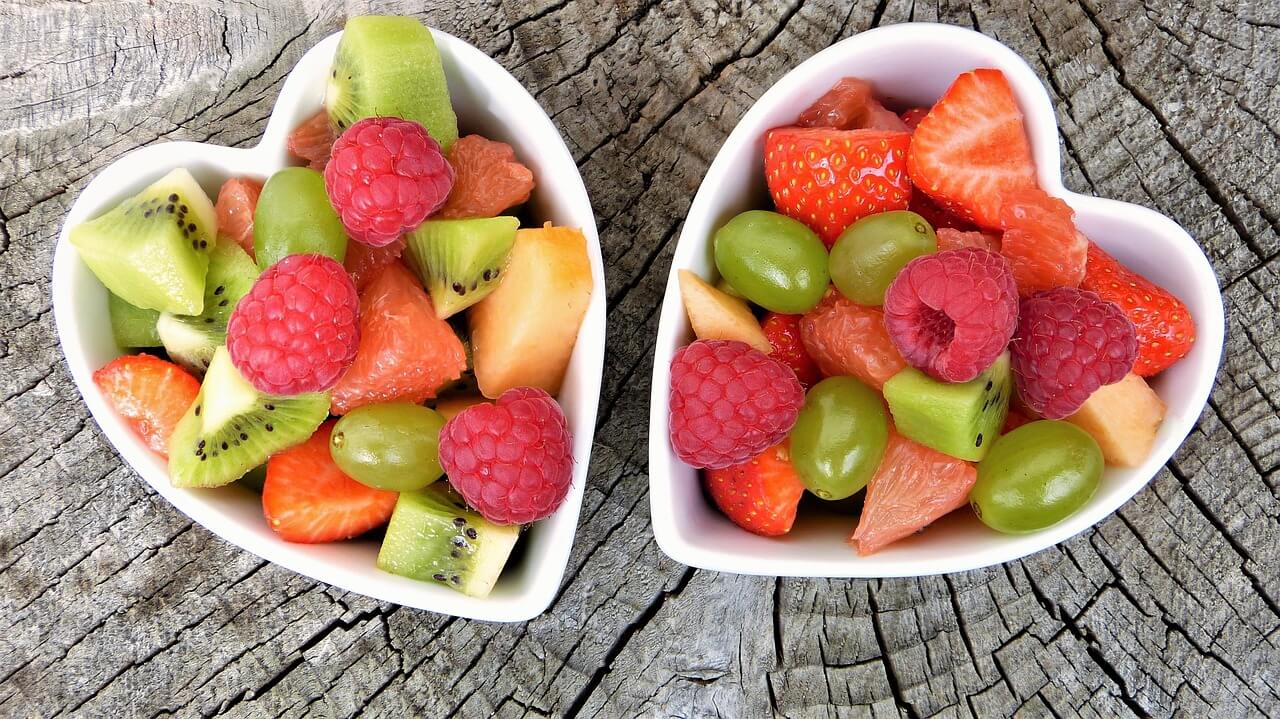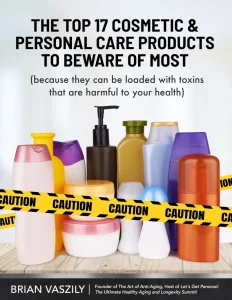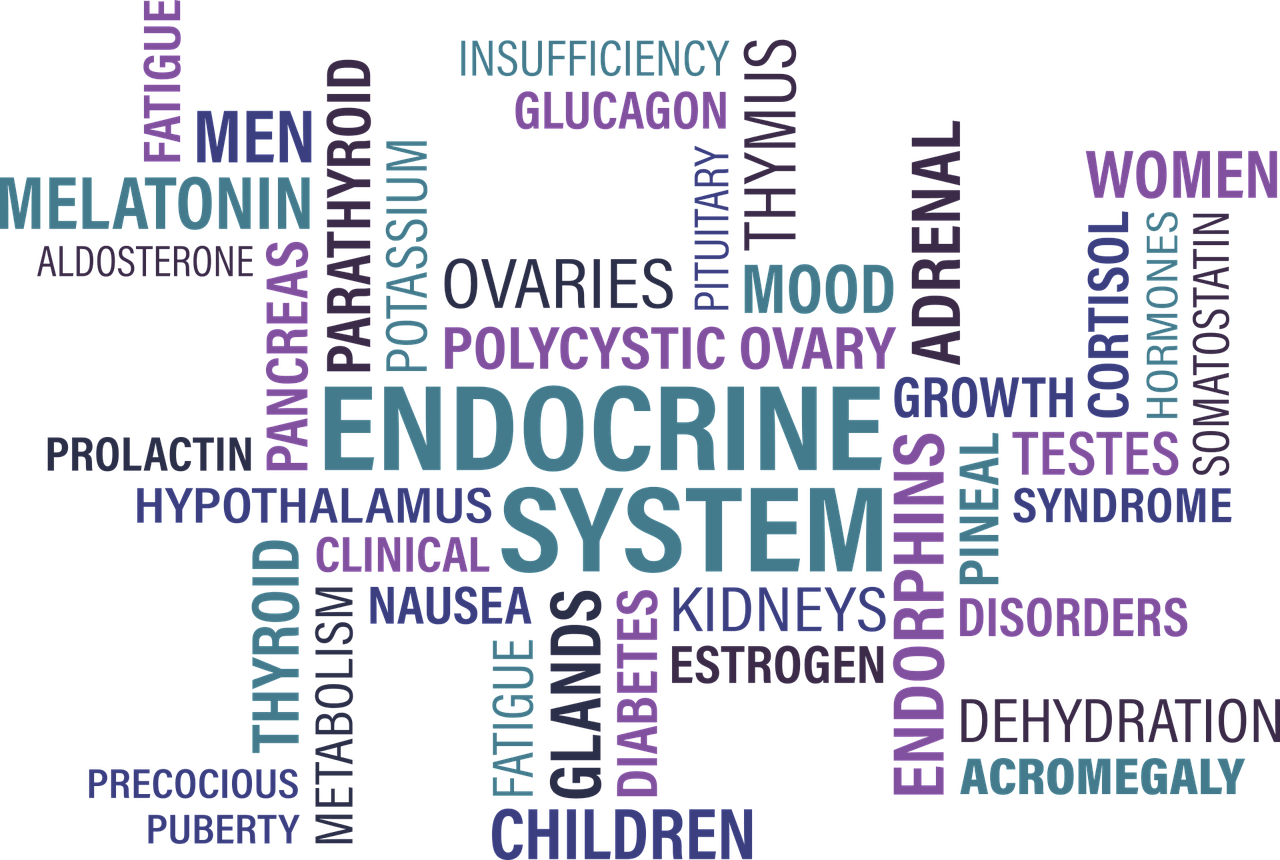Even though you can’t see them, endocrine disruptors are all around you. They are invisible to the naked eye yet linked to serious health problems like obesity, reproductive disorders, developmental issues, and cancer (to name a few).
Awareness of these chemicals has grown drastically over the last 20-25 years. Unfortunately, the evidence coming out of the latest research isn’t good. In fact, the problem is greater than anyone realized.
Though a few steps have been taken to ban some of these chemicals, hundreds (and possibly thousands) still remain in everyday products. It largely remains up to you as a consumer to make choices that will better protect yourself and your family.
With that in mind, here’s more about what endocrine disruptors are, where they hide out, and how you can start avoiding them.
What Are Endocrine Disruptors?
Also called endocrine disrupting chemicals, endocrine disrupters are basically any chemical that interferes with your endocrine system. Some are natural, but the biggest problem today is from man-made chemicals.
That brings up another important question: What is the endocrine system?
The short answer is that it’s a system made up of all the hormones in your body. However, it’s a bit more involved than that, and understanding more about this important system shows why disrupters are such a problem.
An Overview of the Endocrine System

Your endocrine system is technically made up of all the glands that produce hormones, the hormones themselves, and receptors in organs and tissues that respond to hormones.
Most of us are familiar with hormones like estrogen and testosterone, but there are over 50 different hormones produced by the human body. They are involved in many vital functions in your body, including growth, sleep, reproduction, and blood sugar control.
The two major endocrine glands in the human body are the thyroid gland and the adrenal glands.
Your thyroid is majorly involved in metabolism as well as growth and development. Disruption of your thyroid’s function can have serious effects like weight gain, weight loss, fatigue, and depression. It can also affect growth in children.
Your adrenals are small glands that help regulate your immune system, stress response, blood pressure, and more. Adrenal problems can cause symptoms like extreme fatigue, loss of appetite, and so on.
This really only scratches the surface of your endocrine system. It’s tied to almost every other system in your body. Your immune system, nervous system, reproductive system, and brain are all connected to it.
This gives you some idea of just how damaging endocrine disruptors can be to your entire body.
What Do Endocrine Disruptors Do?
So how do endocrine disrupting chemicals work?
There are actually several ways they can negatively affect your endocrine system.
Some chemicals mimic natural hormones. This means they can trick your body into responding to a hormone that isn’t actually present. This could result in an over-response or in your body responding inappropriately.
Other chemicals can stimulate or repress your endocrine system, which leads to your body either overproducing or underproducing certain hormones.
Some chemicals will even block the receptor sites for hormones. This means that even if your body is producing the right amount of a specific hormone, it can’t bind to the receptor to have its intended effect.
One of the best examples of what endocrine disruptors can do in your body is birth control pills. In this case, the effect is intentional, but it still makes use of hormones not produced within the body to “trick” the body into a certain response (preventing ovulation, for example).
Unfortunately, the effect of disrupting chemicals are not intentional. Even worse, you usually don’t even know it’s happening.
Who Is Most at Risk?

Everyone is at risk for damage from endocrine disruptors. As you’ll find out shortly, these chemicals are everywhere and are impossible to avoid entirely.
However, the most vulnerable are infants and developing children.
Hormones are vital for development, even before a baby is born. They play a role in brain development and growth, among other things. Problems that occur from endocrine disruption during a child’s developing years are typically much less reversible than those that occur later on.
Recent research has shown that prenatal exposure to endocrine disrupting chemicals is a very real problem. Specifically, the study found that the children of mothers with high levels of endocrine disruptors in their systems (measured during the first trimester) had a lower IQ at the age of 7.
Of course, the danger doesn’t disappear for adults.
Endocrine disrupting chemicals can affect reproduction, thyroid function, metabolism, weight, and even heart health. They’ve also been linked to breast and prostate cancer, in particular.
The Most Common Culprits
One of the most dangerous things about endocrine disruptors is that even a tiny amount can do a lot of damage.
Typically, the more of a toxic chemical you have in your system, the greater the effect. Unfortunately, research indicates that even a small amount of exposure to endocrine disrupting chemicals can have a major health impact.
And while there are over a thousand potential disruptors circulating, the Environmental Working Group (EWG) has put together a list of the top 12 major ones to avoid.
This list should help you focus in on the most common hormone disruptors to start getting out of your life.
Top 12 Endocrine Disruptors to Avoid
#1- BPA

Short for Bisphenol A, BPA is a chemical used to make several types of plastic. BPA plastic has been widely used for food storage as well as the receipts you get after shopping at a store.
The problem with BPA is that it can mimic the hormone estrogen in your body. Long-term exposure has been linked to different endocrine disorders. It may also increase your risk of developing breast cancer, prostate cancer, PCOS, or type 2 diabetes.
Due to the research, substitutes for BPA are now being used. The problem is that some, like BPF, are demonstrating an equal or greater toxicity level.
Avoid It: Look for BPA-free products, or better yet, avoid plastic altogether as much as possible. Especially avoid plastics that are labeled PC or #7. BPA also hides in the lining of food cans, so be on the lookout.
#2- Dioxin
Dioxins are chemicals that form during many different industrial processes. As endocrine disruptors, they’ve been linked to many health problems, including infertility, developmental problems, immune issues, and cancer.
One of the biggest problems with dioxins is that they are long-lived. Even though emissions have been reduced, they have had years to build up, mainly in the food chain.
Avoid It: You can’t avoid dioxins completely. However, because they accumulate in the food chain, animal products typically have the highest amounts. Eating more plant food can help.
#3- Atrazine
Atrazine is an herbicide most frequently used on cornfields. It’s also one of the most commonly found toxins in drinking water.
Atrazine is known to be a major hormone disrupter. This was first discovered when male frogs exposed to the chemical actually turned into female frogs. Definitely not a chemical you want in your system!
Avoid It: Atrazine is most commonly a water contaminant. Have your drinking water tested for it (and other chemicals). If needed, use a water filter that specifically takes out atrazine.
#4- Phthalates

Phthalates are found in several types of plastic, but they are also a common toxin in cosmetic products. They make cosmetics softer and help them stick longer to your skin. You may not always see them on the label, since they can hide under the broad term “fragrance.”
Phthalates can be very toxic to health. They are known to cause hormone disruption and to trigger testicular cell death.
Exposure can also cause reproductive issues and raise the risk of pregnancy loss.
Avoid It: The best way to avoid phthalates in cosmetics is to look for those actually labeled “phthalate-free.” Stay away from anything that simply has “fragrance” listed because that could be hiding any number of chemicals. Also, avoid using plastic food containers, plastic wrap, and any plastic labeled #3.
#5- Perchlorate
Perchlorate is mainly produced as a chemical byproduct of rocket fuel. Even if you haven’t been around any rockets lately, this chemical has become a widespread contaminant in food and drinking water.
The main danger of perchlorates as endocrine disrupters is that they can interfere with thyroid function. They compete with iodine in your body and prevent your thyroid from getting enough of this much-need nutrient.
Avoid It: It’s pretty much impossible to avoid perchlorate in food, but you can have your water tested for it. If it’s found in your water, you can install something like a reverse osmosis water filter. Ensuring that you get a good amount of iodine in your diet can also help negate the effects of perchlorates.
#6- Fire Retardants
Flame retardants probably aren’t what you would expect as a source of dangerous chemicals. However, chemicals called polybrominated diphenyl ethers (PBDEs) are commonly found in fire retardant substances.
PBDEs are very persistent and can imitate thyroid hormones. They’ve been found in the breast milk of woman all over the world with the highest amounts found in North America. These chemicals have even entered the bodies of polar bears!
The most significant effect of PBDEs is lowering IQ, along with other neurotoxic effects.
Avoid It: It’s impossible to avoid PBDEs completely. You can use a vacuum with a HEPA filter to cut down on toxins that may already be present in your home. You can also look for furniture (specifically couches) with no flame retardant materials.
#7- Lead

Lead can have a harmful effect on your whole body. It’s also one of the top endocrine disruptors and is especially harmful to children.
Exposure to lead can have a toxic effect on your nervous system and reproductive system. It can cause miscarriage, anxiety, depression, high blood pressure, and nervous system disorders. Chronic exposure can interfere with stress-related hormones.
Avoid It: Carefully get rid of any old lead paint, especially if it’s crumbling. Lead can also enter drinking water, so get it tested and filtered if necessary.
#8- Arsenic
Arsenic poisoning sounds like something that would happen in a murder mystery. However, it’s a heavy metal that can contaminate water and certain foods.
You likely won’t be exposed to levels that would kill you, but small amounts can cause several types of cancer. Arsenic is also a hormone disrupter and can interfere with your thyroid and glucocorticoid system. Disrupting the glucocorticoid system can cause weight changes, insulin resistant, and a host of other problems.
Avoid It: Water and rice are the two most likely places to find arsenic. Test and filter your water, and rinse rice well before cooking it.
#9- Mercury
Mercury is another heavy metal and high on the list of endocrine disruptors. Though naturally occurring, it accumulates in the air and ocean, mostly through coal burning.
Mercury is known to bind to a specific hormone that helps regulate ovulation and menstruation. It can also affect your thyroid and adrenals and is an especially dangerous chemical during pregnancy. This is because mercury can accumulate in the fetal brain, causing neurological issues.
Avoid It: Mercury is most often found in contaminated seafood. Wild-caught salmon are often the best choice. Women may wish to avoid seafood altogether during pregnancy.
#10- Perfluorinated Chemicals

Perfluorinated chemicals (PFCs) can cause some major hormone problems. They are mainly found in any nonstick item: cookware, the inside of popcorn bags, fast food containers, etc. They can also be found in some water- or stain-resistant materials.
One specific PFC known as PFOA can be especially harmful. It’s been linked to cancer, decreased sperm quality, and thyroid disease. PFOA also never breaks down in the environment.
Avoid It: Stay away from nonstick cookware (and microwave popcorn). Avoid using stain-resistant treatments on furniture and/or carpet.
#11- Organophosphates
Organophosphates were originally developed by the Nazis for chemical warfare. They were never used for that purpose but were eventually use to create many different pesticides.
Not surprisingly, these organophosphate pesticides can have many negative effects on human health and act as endocrine disruptors. They can affect brain development and fertility, among other things.
Avoid It: Organophosphate pesticides remain some of the most commonly used in conventional farming. Buy and eat organic whenever possible.
#12- Glycol Ethers
Glycol ethers are a commonly found solvent. They are used most frequently in paints, brake fluid, cleaning products- and cosmetics (because why wouldn’t you want to put a chemical like that on your skin?).
Children exposed to glycol ethers are more likely to get asthma and allergies. They are also linked to testicular damage, infertility, and birth defects.
Avoid It: Use natural and non-toxic cleaners and avoid ingredients such as 2-butoxyethanol (EGBE) and methoxydiglycol (DEGME) like the plague.
Cleaning Endocrine Disruptors Out of Your Life

It should be very clear by now how toxic endocrine disruptors are.
And while eliminating your exposure to all of them is mighty difficult, the key is to work toward greatly decreasing your exposure.
There are four major ways to clean a lot of these chemicals out of your life:
Avoid BPA plastic and any heated plastic: Avoiding any plastic would be ideal but it’s very difficult in our world. When it comes to your food, though, try to avoid plastic storage containers — use glass or other safer storage methods. Always look for BPA-free plastic, especially for any product you put on or in your body. And definitely avoid consuming anything from heated plastic (microwaved plastic, plastic water bottles that have been sitting in the sun, etc.)
Eat cleaner: Going organic, plant-based, and minimally processed most of the time is the best choice for avoiding hormone disrupters.
Test and filter your water: Toxins in drinking water are some of the top chemicals that may cause hormone disruption. Get your water tested and look into filtration systems if needed.
Be EXTRA cautious with your beauty and skincare products: What you put on your skin is largely consumed into your body, so it is really just another form of food. And because cosmetics and personal care products are often LOADED with endocrine-disrupting chemicals and other toxins, it is especially important to choose certified organic skincare products where ever possible.
Restore Your Youthful Glow Without Hormone Disrupters

Enjoy your most youthful-looking skin while avoiding endocrine disrupters with Purity Woods’ #1 bestselling Age-Defying Dream Cream.
It has zero toxins and is USDA Certified Organic. The powerful botanicals it provides your skin are sourced direct from nature to eliminate the appearance of wrinkles, fine lines, age spots, and more.
Adding this Age-Defying Dream Cream to your skincare routine is one key lifestyle change that can get you away from endocrine disrupting chemicals and down a healthier road to rejuvenation!
Head Here to Learn More About The USDA Certified Organic Age-Defying Dream Cream


Plastic is everywhere! I realize one must stop using it, but WOW! I will try and begin the the trek in small steps. First rewrap foods from store, using beeswrap paper. Storing leftovers will be the challenge.
Beeswax is a good idea, thank you! I’d look into plastic in cold environments bc I’ve heard where it’s an issue is when it sweats into our food and gets heated… but ideally, we’d be rid of plastic anyway bc it’s not good for the environment.
I have tried to cut down on plastic but it is really hard. Glass is my go-to food storage, but I am in the process of moving and glass is just so heavy and breakable. I can’t bring it all with me. I have tried beeswrap and other non-plastic items but am still looking so any tips are welcome. I also stopped using foil due to the aluminum.
I often place a piece of wax paper on the food to store (or parchment), and then plastic wrap over that.
Good idea–thanks!
I do that as well. 🙂
I use mason jars to store my food of all sorts. It works quite well.
I stopped aluminum deodorants years ago but still wrapped food in foil for cooking. DUH! I finally moved over to unbleached parchment paper but was in a quandary on how to roast my beets. Finally I wrapped them in parchment paper and used old bread ties to close them at the top. Worked like a charm!!
I have found BPA-free plastic storage containers on Amazon. It doesn’t solve the environmental impact issue, but sometimes, I just can’t cart around containers of glass.
Use Parchment Paper to line plastic freezer containers and under plastic covers of glass storage containers. I reuse glass jars to store liquid foods. Also put parchment paper under the covers.
I freeze fruit et al.
Thank You for this article.
Can also line baking pans with parchment paper.
Hi, I use different sizes of mason jars and other jars from food I buy. It works great. I also use a few flat glass pieces with lids (which are plastic) I use unbleached parchment paper. It is not an easy transition. As I ran out of each size of plastic bags, I just didn’t replace them. The mason jars keep leftovers fresher for longer. Best wishes
Excellent idea, going to look into getting large mason jars for leftover storage!
I use mason jars in several sizes.😊
Use glass containers with lids. They are packaged individually or in sets. You can buy them at your local hardware and major food stores, probably Walmart too but I don’t shop there.
HomeGooods also carries them regularly.
I’ve had Thyroid issues for many years. Good to get a reminder that we still have to do our best to avoid all this crazy stuff. I’ll send the info to my pregnant sister.
Happy New Year and thank you for this article. I also wonder about petroleum jelly as a big endocrine disrupter and if its related or something like the perchlorate from rocket fuel. Because I notice many also say to avoid it in skincare products. I appreciate this article because it also states what to do to lower your exposure.
Whether or not it’s an endocrine disrupter, the name ‘petroleum’ tells you it’s not something you want to put on your skin – or breathe in. Vaseline is a good example.
who needs vaseline when we have food grade essential oils!
Thank you for sharing all this very important information that we all need to know!
Yes, an air and water filter are important. Great article on food, too. Those water refill tanks outside grocery stores clean the petroleum out of water. We have a filter attached to our fridge, but not sure how well it filters, and if it also filters the petroleum out as these grocer/market filter tanks do… I prefer spring water. I’ve heard aquatru and airdoctor are good…
A good introductory article highlighting areas to look for problem chemicals, however, I get the feeling that it is only the tip of the iceberg and this is a complex issue subject to change as our exposure to chemicals changes over time depending on the whims of manufacturers and how effective (if at all) the safety regulators are.
Thanks for this information
I buy pb, etc-free plastic storage bags at my health food store; they are a compromise, for when I really need to store food in plastic bags. Health food stores are a good source for cleaner, safer products; too bad they are always more expensive!
Thank you so much for getting this info out there. I have been working with an Integrative Function Health practitioner the past 1 1/2 years and have learned a lot but realize I still have so much to learn! I am constantly amazed at how many ‘everyday’ products have so many toxic ingredients and how we are constantly being exposed to toxins and am truly appalled that our government continues to allow this even after many other countries have declared them unsafe and no longer allow them to be used! Be vigilant and know what is in the products you use (beauty, cleaning, laundry, etc.) the food you consume, the water you drink, the supplements you take, cookware… EVERYTHING! My hard work is paying off and my health continues to get better!
You have done an excellent job this past year with educating us with all the health information
I wish you an excellent new year & I know you will outdue yourself in 2021!!!! Looking forward to it & I WILL READ MORE PACKAGES INFO
Is there a link to these disruptors and sudden onset of hair loss in females? I am seeking solutions and I believe in my heart that it is related to metals and/or toxins but am at a loss to know what to do. Anyone?
Hair loss for me has happened about 4 times when during a space of a couple of months following health accidents or trauma from a car accident, I lost about 1/2 my hair.
I’ve had two major MRSA infections followed by radical surgeries and one time actually wore a wig for a couple years.
Take heart though. Each time it has come back strong as if mirroring my conviction to regain my overall wellness.
I take 10,000 mcg daily of biotin for my hair and nails. I have found that if I do that and follow a healthy diet and lifestyle
I plan to have a full head of hair into my crone years.
Thank you ,I will buy biotina soon!!!☀☀☀
Just learned stinging nettle root helps with hair loss. Also, saw palmetto. Also, Nutrafol. Need to neutralize DHT that causes hair loss. Research Fo Ti & Propidren.
Thank you for this article! I was surprised not to see fluoride (in toothpaste and fluoridated water) on this list, as it is a known endocrine disruptor and has deleterious effects in particular on the thyroid (both follicular cells and parafollicular cells), parathyroid, and pineal glands. See studies done by Dr. Theo Colburn, PhD.
Absolutely! One unknown for me, was breathing the chlorine/flouride in the steam from the shower. Have a filter on my shower head now. I filter my water. Can buy reverse osmosis water at Whole Foods.
Great article. As much plastic as I use I should be dead already!! 🤪I am going to begin now to greatly reduce my consumption of these toxins as much as I am able to do so. Thank You!!
Curious if the silicone lids are toxic for us. We’ve been using them numerous months, in place of plastic wrap. I like them, and hope it’s a good alternative for the planet and health. Any thoughts??
Everything I’ve read about silicone use indicates it’s not toxic primarily because it’s stable. Freezing/cooking will not destabilize it, thus no chemicals will be released. But I’m no scientist – just google’s BFF. lol I don’t use a microwave to reheat food but do store leftovers and use it for ice cubes, popsicles, etc. Hope this helps!
Thanks for this very informative article. I have stopped using plastic especially for food storage and reheating for quite awhile now. Ittmind blowing how many chemicals we live in!!!!
I also have been going natural in my skin care and body care. Just ordered my 2 nd set of Purity Woods dream cream and serum. These products are AMAZING!!! At 63 my face began breaking out which I NEVER had problems with as a teen or ever! Had tried all different products and nothing worked. Since using PW my skin is glowing and healthy and I am so so happy! Thank you for such a wonderful product!!
I started using Purity Woods about a year ago post cancer treatment that destroyed my skin. Even though I was in my mid 60s I had never had wrinkled crackly skin until chemotherapy. The Purity Woods products have restored my face and neck and greatly improved the rest though I use it only sparingly on my body. I hope they produce a body lotion/cream sometime soon. The face products are a bit pricey to use on the rest of me.
Thank you Brian for all the important education. Last year I heard you speak and discarded many personal and cleaning products in my home. I have been making cleaners with essential oils and I purchased your Dream Cream for day & Night, your facial cleaner and Serum. I love these products, they are wonderful. Keep up the good work, when you know better you do better. Many Thanks. I also purchased your latest Summit, loved it.
Wow! One of the best articles yet. Succinct… List the Disruptors, where they are found,what they impact and cause, and what to do to avoid them. Wish all communications were presented like this. There is so much info out there that we are getting ‘info overload’. As a person with Hashimoto’s , I am very interested in anything that affects my Thyroid Gland
Thank you!
I would greatly appreciate an article on Arthritis.. What foods to eat and avoid, as well as, what to do to minimize and if there is any other environmental/chemical factors that contribute.
Thank you again
Grazie Brian per tutte le informazioni preziose che ci dai!!!☀☀☀
Thanks for the article, but I am surprised that you didn’t mention “silver” fillings which are 50% mercury. I’m not sure if dentists are still installing them but they should be removed by a well-trained dentist.
Wonderful information to have! Even if it is very scary! Thank you so much,
Does the food stuff need to be in contact with the plastic or just in the vicinity?
(I am thinking of the Pyrex boles covers)
And does the bees wax paper seal the food well enough to be able to continue putting it in a plastic bag for the freezer storage…
We need a device to carry with to keep us informed of such dangerous contaminants, I’m finding with articles such as this our exposure to the dangerous chemicals is so overwhelming it’s not humanly possible to remember it all, such a device would be your best friend while shopping for anything…
Thank you for this article, it’s good to know someone is watching out for us…
Try the Think Dirty app for your phone. Very helpful!
I am an aromatherapist who has been teaching classes and telling people about the harm chemicals do for several years! Your article is terrific! I make and sell my own skincare products as well as teaching people to make their own chemical free skincare products and cleaning products. I will get more specific about the information you have shared.
Thank you!
Does anyone know where I can buy toxin free liquid foundation and eyeshadows?
There is a nifty phone app called “Think Dirty” that is very handy for explaining ingredients in common commercial products and identifying those that are harmful. Products are ranked based on their levels of harmful ingredients. You can scan a bar code right at the store and get the info you need. If it’s not listed, you can submit it for review to add it to the database. Anything with “fragrance” listed on the label is marked down if it’s not defined as to what they use for fragrance. I use this app on a regular basis. Very helpful!